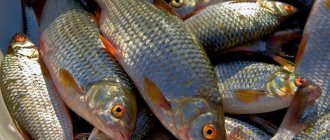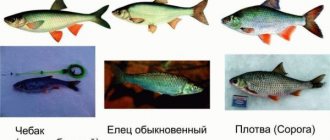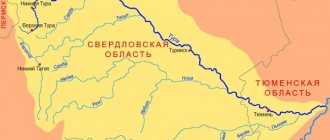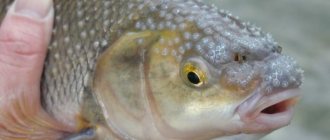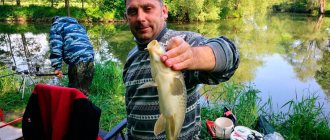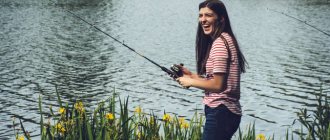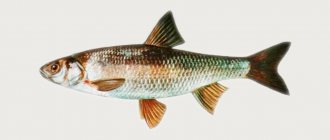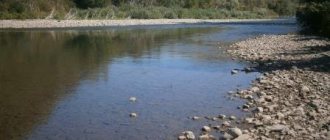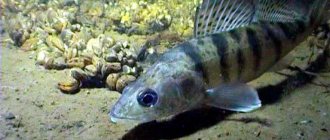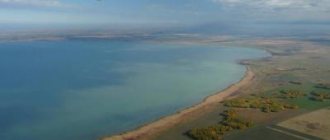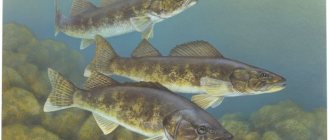Chebak fish is often mentioned in everyday life among northern fishermen. Hearing this, the inexperienced angler wonders who the chebak is. This fish is a subspecies of roach. Due to its external similarities and belonging to the same carp family, it is called the Siberian roach. Mainly lives in Siberia and the Urals. Chebak actively reproduces and grows quickly, so there is a large number of it in the Northern regions. The fish is the only type of roach that is of high value in industrial fishing.
What does chebak fish look like?
Content
Having learned what a chebak is, a logical question arises: what is the difference between a roach and a chebak. The main difference by which it is easy to distinguish a chebak is its high body, covered with large scales. The difference between the chebak and the roach is a short head with a high fin (consists of a large number of rays).
Mostly, there are individuals with green or blue backs and silvery sides. The fins are bright: either red or orange. The characteristic eye color is orange.
Chebak, from its family of fish, is one of the most useful and promising species for both private and industrial fishing. The fish grows actively, eating various insects, but does not grow to large sizes. It is extremely rare to catch fish longer than 40 cm, and the maximum weight is 900 g.
This fish is a subspecies of roach
General characteristics of fish
The common roach is familiar to every fishing enthusiast. It has the following systematic position:
- Class: Ray-finned fish,
- Order: Cyprinidae,
- Family: Cyprinidae,
- Genus: Roach,
- Species: Siberian roach.
The roach differs from its closest relatives, the carp, in the special structure of its scales. It is large, unserrated, located in one row (5-6 pharyngeal teeth on each side), the fish has 40-45 scales in the lateral line. The location of the dorsal fin in relation to the ventral fin and the structure of the mouth, which is located at the end of the front part of the animal, differ.
The back is black with a blue or green tint, the lateral surfaces of the body and the abdominal part are painted silver. The dorsal and caudal fins are dirty green, the pectoral fins are pale yellow, the ventral and anal fins are reddish. The eyes are yellow with a red spot. Sometimes there are individuals with yellow eyes and fins that have golden scales with a reddish tint on the sides. Fishermen even jokingly call them “royal” roaches. During the breeding season, a male can be distinguished from a female by the presence of pimples on the lateral surface of the male’s body.
Usually the chebak leads a gregarious lifestyle. Prefers places with weak currents near sunken trees and thickets. Often in a school of small or medium-sized fish there are several larger specimens. Small and medium-sized individuals are not particularly timid.
The Siberian roach grows to sizes not exceeding 70 cm in length. The weight of such specimens varies from 800 g to 2 kg. The longest life expectancy is 20−25 years. The world record is a fish caught in the GDR, which had a mass of 2.58 kg. The bulk of the fish has the following dimensions: 30−40 cm in length with a weight of 300−600 g.
Chebak is particularly unpretentious and can easily switch from one type of food to another. This feature allows it to quickly populate various reservoirs with both running and standing water.
Chebak is a heat-loving fish. If in summer it is caught everywhere with equal success, then in winter it prefers warm weather, which Siberian residents jokingly call “chebachya”. The best time for fishing is March and April. In summer, the chebak stays in various layers of water, maneuvering from the surface to the depth. In winter it prefers to go deeper.
The Siberian roach reaches sexual maturity at 3 years. By this time, the fish reaches a length of 10-15 centimeters and a weight of about 200 g. Spawning begins in May, when the water warms up to a temperature of 10 degrees, but long before this, the fish begin to gather in huge schools and go to spawn in a whole school. After two weeks the fry appear. The large number of roach offspring allows not only to preserve the species, but also to become an important link in the food chain, acting as food for large predatory fish. However, in some reservoirs the chebak itself becomes a predator.
Chebak fish soup is almost never prepared - the fish is overcooked and there are a lot of bones in it. Fish fried in batter tastes much better. Chebak has an excellent taste when dried and smoked.
Important! Any roach, and chebak in particular, is often a carrier of opisthorchiasis worms, which cause an unpleasant disease - opisthorchiasis. Therefore, fish must be thoroughly cooked before consumption.
Habitat
The places where chebak fish are found are no different from the roach’s favorite reservoirs. Chebak is more of a river fish, but it also feels good in reservoirs with weak or no current. The main condition for the presence of chebak is fresh water. In most reservoirs inhabited by chebak, this fish is the most numerous species.
You can catch a subspecies of roach in most reservoirs, rivers and lakes in Siberia, the Urals and the Far East. The largest number of fish is found in:
- Irtysh;
- Khiloke;
- Kolyma;
- Tobole.
Tackle
When fishing for chebak, you use almost the same fishing rods that are used for fishing for common roach, for example:
- float;
- bottom;
- onboard;
- winter.
In addition, catching large chebak with a spinning rod on a rotating spoon of zero or first size can be successful.
Float
All types of float gear are also applicable to catching chebak. The use of a particular fishing rod depends on the distance and depth of fishing, as well as the preference of the angler.
- Fly and Bolognese rods are used when fishing from the shore at short and medium distances, as well as when fishing from a boat in a still body of water.
- The plug is used for an average fishing distance of up to 16 -20 meters. This tackle works well both in still water and on the river.
- A match rod with a cone-shaped spool on an inertia-free reel is used for catching Siberian roach at long distances.
In all float gear when fishing for chebak, the most delicate equipment is used. Due to the small size of the fish, fishing lines of the thinnest diameters are used. A monofilament with a thickness of 0.14 millimeters is used as a working cord, and for leashes - 0.10-0.12.
The choice of float-weight system is also minimized. In order to successfully catch a cautious chebak, sometimes they are content with a load weight of only one gram with spaced pellets.
Bottom
Of the bottom gear, modern fishermen use three fishing rods:
- donka with a reel;
- feeder;
- rubber.
Coarser bottom gear - zakidushki - are practically not used nowadays.
In the equipment of donks with reels and feeders, thin equipment is also used. But unlike floats, here you can use thicker fishing lines as a working cord and rigs, but leashes are also used with a minimum diameter. In addition, for the sensitivity of the feeder tackle, thin braids and shock leaders are used.
The choice of rod depends on the casting distance and the speed of the current if fishing is in the river. The reel is selected to match the existing fishing line so that it fits on a spool of 70-100 meters. Such a winding gives scope for catching a large trophy that has bitten, the same bream, for example, or carp, in addition, the reserve will help to quickly collect the tackle in case of an accidental break.
Onboard
An onboard fishing rod is used when fishing from a boat in the current. At the same time, it can be connected to a feeder, both when fishing with a ring, and work separately on free vacation with bait with balls. In the second version, it resembles the work of a winter fishing rod for the current.
Habits and nutrition
Chebak fish is an omnivorous species, its natural food is:
- various algae, prefers young ones;
- any greenery from the shore;
- larvae of all kinds of insects;
- small crustaceans;
- shellfish;
- worms
Read more
Rating of PVC boats for motors
Fresh water is the main condition for the presence of chebak
Chebak spawning
In total, the chebak can live about 10 years. The Siberian roach reaches sexual maturity at the age of 3-5 years; now the length of the fish is about 10 cm. Spawning of the roach directly depends on weather conditions. It prefers to start breeding when the water temperature reaches 8°C, which is typical for the month of May. Now the fish gather in small schools and swim to their spawning grounds. Chebak often chooses deep places for spawning, usually at a depth of 2-10 m, so that the eggs do not freeze. There is a pattern: the lower the ambient temperature, the deeper the spawning ground is located.
The Siberian roach is quite strong; it chooses remote areas for spawning. Often, swimming to spawning grounds takes about 2-3 weeks. As the flock moves, the water warms up even more. Suitable places for spawning are quiet bays with shallow depths. Sometimes it lays eggs in flooded meadows.
Small individuals go first to spawn; after a day or two, medium-sized individuals become involved in the process. After a few more days, large chebaks begin to spawn. At the stage of selecting males, mating games take place. Large numbers of splashing fish can be easily heard over long distances.
The chebak is quite prolific; a medium-sized female lays about 50 thousand eggs. After spawning, the fish tends to go deeper into the water to recuperate. Now her appetite is awakening, she eats large quantities of shellfish and algae. The eggs hatch into fry within 2 weeks.
Spawning of chebak directly depends on weather conditions
Chebak fish: description
Appearance
This type of roach is distinguished by a high body, on which there are large scales. The head is quite short, and on the back there is a high fin with numerous rays.
Basically, the back of the chebak is painted in a bluish or greenish tint, and the sides are brightly silver in color. The fins are orange or bright red. The eyes are orange in color.
Despite its active growth, the chebak does not grow more than 40 centimeters in length, with a maximum weight of about 900 grams.
Where is this fish common?
Chebak, like any roach, prefers fresh water bodies, such as:
- Not big rivers.
- Ponds.
- Big rivers.
- Big lakes.
- Reservoirs.
In almost all bodies of water that the chebak inhabits, this fish is the most numerous. In Russia, the chebak is found in the reservoirs of the Urals and Siberia. It is found in large quantities in the following rivers:
- Tobol.
- Irtysh.
- Indigirka.
- Kolyma.
- Khilok.
- Chikoy.
This type of roach is also found in lakes of the Urals, Siberia and the Far East.
Spawning
The chebak begins to spawn when it reaches 3-5 years of age, when its length reaches 10 centimeters. The breeding process begins in May, when the water warms up to +8 degrees. During this period, the chebak gathers in small flocks and spawning begins. As a rule, Siberian roach lays eggs at a depth of 2 to 10 meters, depending on weather conditions. The colder it is outside, the deeper the fish lay their eggs.
Chebak is considered a prolific fish, since the female can lay tens of thousands of eggs at a time. After spawning, the fish goes to depth, where it regains its strength, actively feeding on algae and mollusks.
After about two weeks, fish fry emerge from the eggs.
What does a chebak eat?
The Siberian roach feeds on:
- Algae.
- Larvae of various insects.
- Small crustaceans.
- Worms.
Commercial fishing
Siberian roach is caught on an industrial scale. In terms of taste characteristics, the chebak is inferior to the roach, which is found in the Volga River, but certain types of chebak reach large sizes and gain significant weight. Of course, if we compare the subspecies of roach.
Features of catching chebak
Fish are hunted all year round, but the best time is summer and spring. Catching chebak in winter is also possible. It is found at various depths in most bodies of water. The wide distribution of fish has led to an increase in the number of fishermen hunting for them.
Important! Particular care must be taken when consuming chebak, because this species is one of the most contaminated. When eating poorly cooked fish, opisthorchiasis infection may occur.
Winter gear
Fishing for chebak in winter is carried out using three types of gear:
- float rod;
- jig with a nod;
- fishing rod for the current.
The winter float fishing rod differs from others in that it is tied to a feeding area; this method is used by bream fishermen on large lakes and reservoirs.
More popular fishing for chebak in winter is carried out with a fishing rod equipped with a nod and jigs. In this option, reelless fishing with baitless jigs and flies is also possible.
The fishing rod for the current is equipped with a bright guard, a feeder and feeder equipment, most often a helicopter or paternoster. Fishing for chebak in winter is carried out with such gear using a stationary feeder or a miniature one located directly in the gear.
Where and when to catch chebak
The places where the chebak lives are very vast; it prefers calm water, but does not disdain the current at all. It is often found throughout the reservoir, and is caught at all depths and bottom topography. Feeding patterns and observations by fishermen help to conclude that the largest number of fish are found in shallow water with lush algae. Chebak often stands on the rifts.
Read more
How to catch grayling using a bombard with a fly?
It is not difficult to attract fish, just use bait, regardless of the origin of the mixture. Pearl barley is often used as bait and groundbait; a whole flock can swim to it.
The pre-spawning period is the best time of the year for fishing for chebak. A large number of fish actively absorb all the food that comes along the way. Now any food can lead to constant bites. As the weather gets warmer, the fish become somewhat more passive, but are still caught well with regular float tackle. In autumn, fish activity increases; this subspecies of roach tends to stock up on nutrients for wintering. Autumn fishing is interesting because of the active bite at any time of the day.
Healthy! The best time of day to catch trophy fish is early morning or sunset. It is easier to catch large fish in spring and autumn using animal bait.
Vast places where the chebak lives
Fishing for chebak
Gear selection
As a rule, chebak is caught with a regular float rod, although some anglers also use a spinning rod for this.
Catching chebak with a spinning rod
To do this, it is recommended to take a light spinning rod with minimal dough. The smallest size spinners and spoons are suitable as bait. As a rule, these are spinner sizes from 0 to 1, and it makes no sense to use larger spinners. Chebak is not a predatory fish, so catching it with live bait also makes no sense.
Nowadays, the most attractive baits may be made from edible rubber, which can imitate various insects.
Shmal.Karpinsk.Fishing.Chebak on a spinning rod.
Catching chebak with float tackle
To catch this fish, just arm yourself with a regular float rod and find a suitable place. As bait you can use:
- Worms.
- Maggot.
- Bloodworm.
- Caddis fly.
- Bark beetle larvae.
- Lamprey larvae.
- Various insects.
- Barley.
- Dough.
- Bread.
It is better to experiment with baits, since the chebak, like any other fish, is unpredictable and can peck at any of the baits, while refusing the rest. In this regard, when going fishing, it is better to stock up on several types of baits of different origins.
Fishing - Catching chebak on the river with a float rod. Groundbait "DUNAEV-FADEEV Feeder River". Test.
Choosing a fishing spot
As a rule, chebak is found in places where there is no current or where there is one. In other words, it can be found anywhere in a body of water. According to some fishermen, chebak prefers shallow water with a large number of aquatic plants. In addition, it is found near rifts. In other words, the chebak is where there is something to profit from.
To attract the chebak to the fishing spot, it is better to use bait of any origin, either purchased or homemade. To prepare bait, you can use the well-known pearl barley, which can gather entire schools of chebak at the fishing point.
Catching a chebak
Favorable periods for fishing
Chebak is a fish that can be caught all year round, but spring is considered the most productive. As a rule, before spawning, the fish show a real hunger, and the chebak can bite on any bait. With the arrival of summer, the activity of the chebak decreases, although not significantly. To catch larger specimens, you need to fish either early in the morning or late in the evening.
The chebak's bite is no less active in the fall, when it intends to stock up on nutrients before leaving for the winter. As a rule, in spring and autumn it is better to give preference to baits of animal origin, as they are more nutritious. During this period, Siberian roach is caught around the clock, but the heaviest specimens are caught early in the morning or at night.
The active bite of the chebak depends on weather conditions.
According to many fishermen, on cloudy days there is a much greater chance of catching this fish, especially a larger one.
Tackle and fishing methods
Chebaks are well caught using relatively simple gear. People often go hunting with float rods of any type: match, plug or fly sticks.
When choosing float gear for catching chebak, you should focus on the fishing conditions. There are several important tips when choosing a fishing rod:
- Bolognese rods and swings. These float tackles perform better at short to medium distances. They are suitable options when fishing from a boat;
- plug-in models are used for fishing at medium distances - up to 20 m. Equally effective tackle in calm and fast water;
- A match with a spinning reel is the best choice when fishing long distances from the shore.
It is better to use a thin, monofilament fishing line of 0.14 mm as equipment, and a thread of 0.11 ± 0.01 mm should be installed on leashes.
Float options are not always the best; sometimes you can’t do without bottom gear. The most popular are feeders, classic donks and elastic bands. The fishing line for installation should be thicker - 0.2 mm, and the same fishing line is installed on the leashes. To increase the responsiveness of the tackle, it is better to install braid and use a shock leader.
Ice tackle is somewhat different; now they use a float, a nod with a jig, and a short rod in the current. The best results are provided by a jig with a nod, as the mobility of the fisherman increases in comparison with float varieties. A fishing rod for the current is always equipped with a guard of noticeable colors, a feeder-type equipment and a feeder.
Read more
How to catch chub with fly fishing?
Chebak is caught well with relatively simple gear
Spawning and catching
For fishing, the same gear is used as for catching roach. The following types of fishing rods are used:
- bottom;
- onboard;
- winter
A spinning rod with a rotating spoon of zero or first size is also used.
Float gear:
- fly and Bolognese rods - used for fishing from the shore at short and medium distances, from boats in standing waters;
- plug – used for fishing from 16 meters;
- match rods with a cone-shaped spool on a spinning reel - suitable for long-distance fishing;
- thin diameter fishing line;
- float-weight.
Bottom:
- donka with a reel;
- feeder;
- rubber;
- snack;
- thick fishing line;
- thin braids;
- reel for thick fishing line.
Onboard ones are used for fishing from a boat in the current. They can be connected to a feeder or used separately during a free holiday.
Winter:
- float rod;
- jig with a nod;
- fishing rod for the current.
For fishing, different types of plant and animal baits are used. The chebak bites on maggots, caddis flies, worms, jigs, baked goods, dough, peas, corn, pearl barley, and wheat. You can also combine corn with maggot.
Yandex pictures
With the help of bait, schools of fish are attracted to the fishing spot. This is precisely the main task; aquatic inhabitants should be interested, but not fed. Light dry mixes or porridges with flavors are popular. The bait is mixed with soil or clay. The flavoring can be alcohol-based and should have a spicy, fishy or meaty smell. In winter, you can lure flocks with crushed breadcrumbs, sunflower seeds, bloodworms or a worm.
What to catch a chebak with
What to use to catch chebak fish:
- bloodworms and maggots are the most common baits;
- caddisfly;
- worm;
- wheat or semolina dough;
- bread;
- corn;
- peas;
- cereals;
- pasta;
- pearl barley.
In difficult conditions it is often necessary to prepare “sandwiches”; the chebak reacts even better to them. The best sandwich is a combination of maggot, corn and star.
Lure
Bait for catching chebak should attract it to the fishing site, but not saturate it. Summer dry mixtures or porridges are richly flavored with sweet and fruity attractants. By the way, the “salapinka”, popular in many Russian and other regions, also works great on chebak.
It is advisable to mix bait for fishing in the fall based on soil from the shore of a reservoir; they should contain up to 70 percent soil or clay, depending on the fishing location. Cold water aromatics are added on an alcohol basis and should have a spicy or animalic, fishy or meaty odor.
The number one winter mixture for chebak, as well as for other types of carp fish, is ground crackers with the addition of crushed sunflower seeds and crushed bloodworms or worms, depending on what you are going to fish for.
Tips and tricks when catching chebak
An expert fisherman with 25 years of experience shares his secrets:
- Chebak is an omnivorous and quickly satiating fish. She should not be overfed. It is better to throw bait relatively often, but in small portions. It is worth adding more fruity and sweet flavors to dry mixes;
- in cloudy weather the fish bite better, and large individuals are especially often caught;
- in cold water it is better to use alcohol-based flavors that have meat, fish and spicy aromas;
- if there are a large number of unrealized bites, it is worth setting a smaller hook;
- the best bait: breadcrumbs, ground sunflower seeds and crushed worms or bloodworms;
- There is no need to maintain silence and disguise, the chebak is careless, he suddenly rushes to the hook. During fishing, it does not give much resistance to the angler.
Fishing for chebak is interesting due to the active bite, but it does not give adrenaline. It is better to go for chebak for anglers who prefer results over interest.
Originally posted 2018-09-12 11:59:26.
Fishing for chebak: tackle and bait
The Siberian roach grows quickly and is caught on an industrial scale. Chebak is an omnivore. Therefore, it can be caught using bait of both animal and plant origin. Although the Siberian roach leads a very peaceful lifestyle, with the right bait it can be caught even with a spinning rod. Reacts well to bait.
The most common option is float fishing . Almost any fishing rod is suitable for it. The process is simple and exciting; we don’t need any heavy-duty gear or other complex devices. The best option would be a simple, lightweight rod without any frills. Once you come across a school of Siberian roach, you will have to work a lot with the rod, which is why its weight is so important. Fishing line - 0.2 mm, a light weight and a float with good sensitivity - and go ahead. It is not even necessary to use a reel , but its presence will greatly facilitate the process of folding and unfolding the gear.
So, to catch this fish on a float, you can use the following bait:
- manure worm,
- bloodworm,
- bark beetle,
- maggot,
- small insects,
- lamprey fry,
- bread crumb,
- pearl barley,
- dough and so on.
It is best to take several types of bait with you - you never know which one the fish will like.
When fishing with a spinning rod, you can achieve tremendous success. To do this, you should use a lightweight rod with the test set to minimum. Small spinners and various kinds of spoons are also suitable for fishing. The minimum size spoon should be used.
Important! Chebak does not bite on live bait. However, he himself can become a good live bait, which is often used by experienced fishermen. There are both pros and cons to this: on the one hand, a chebak placed on a girder behaves very violently and can tangle the fishing line, on the other hand, it is this activity that attracts large predatory fish.
